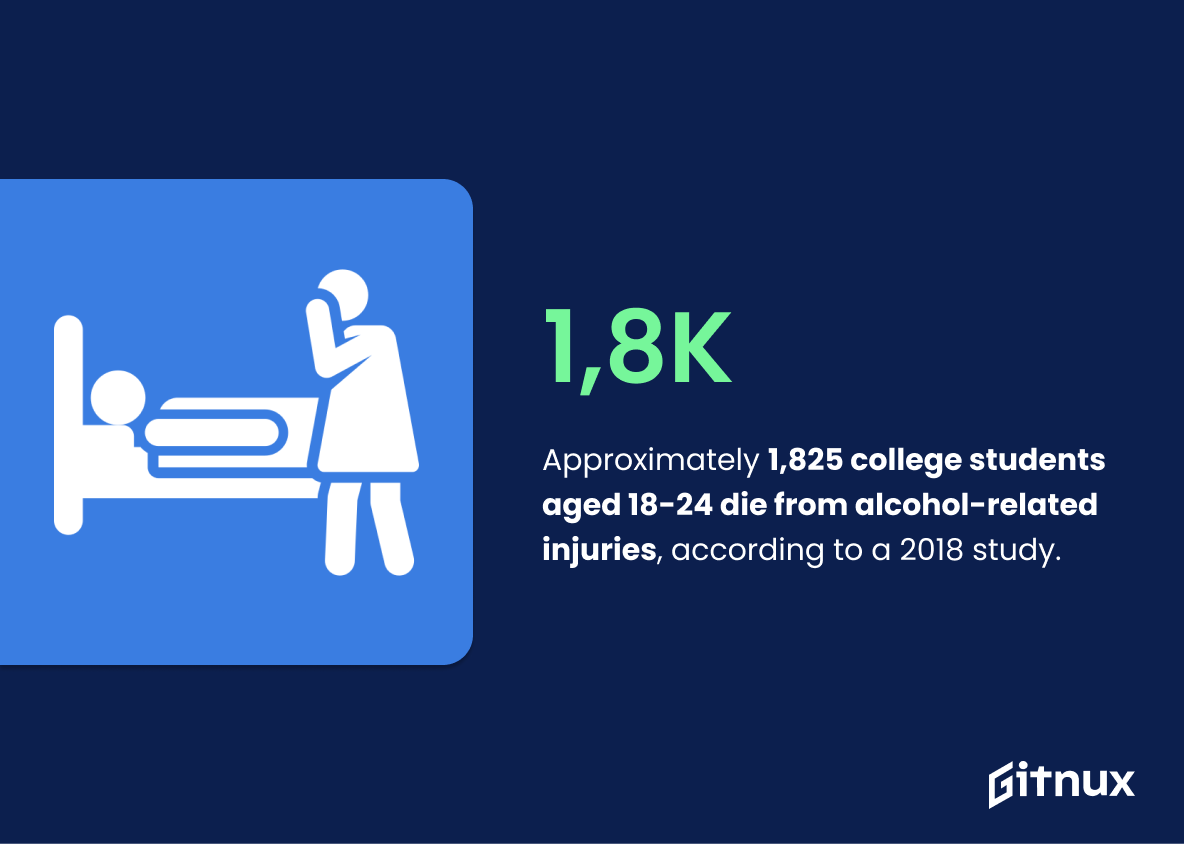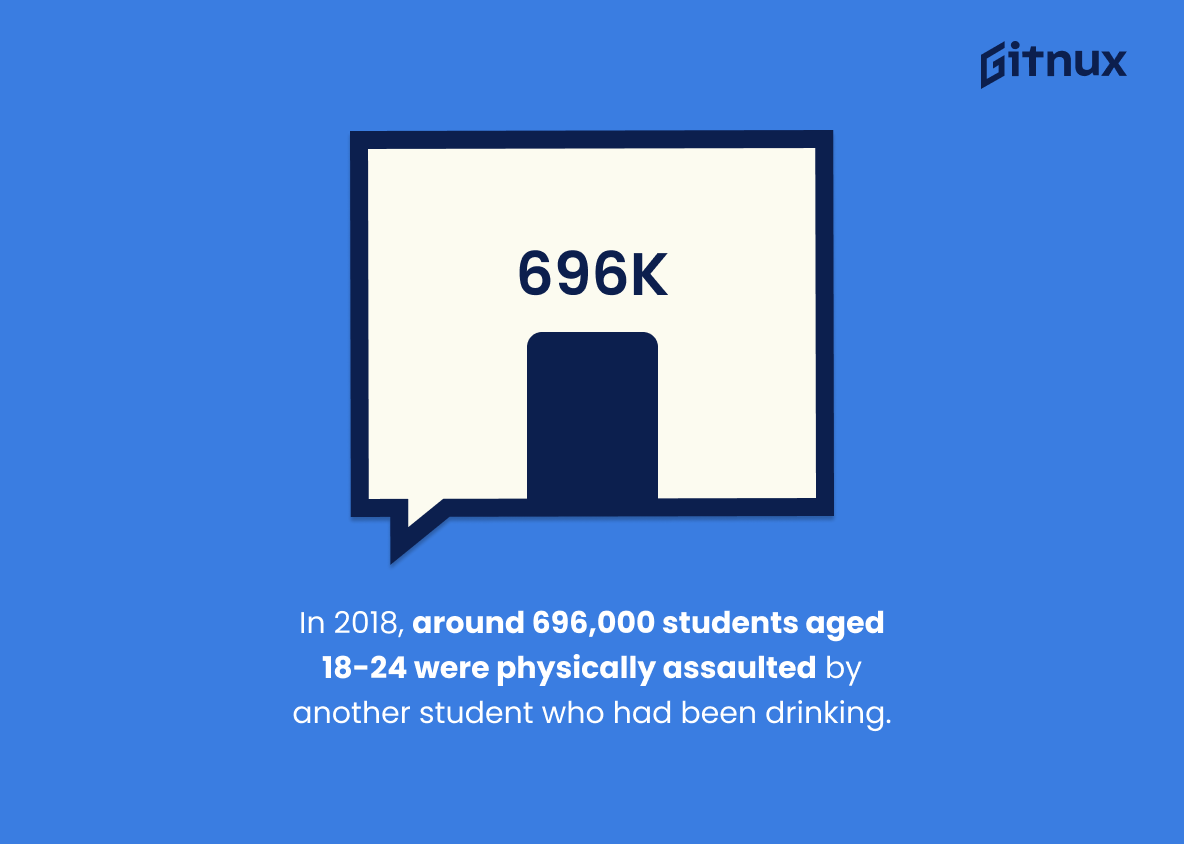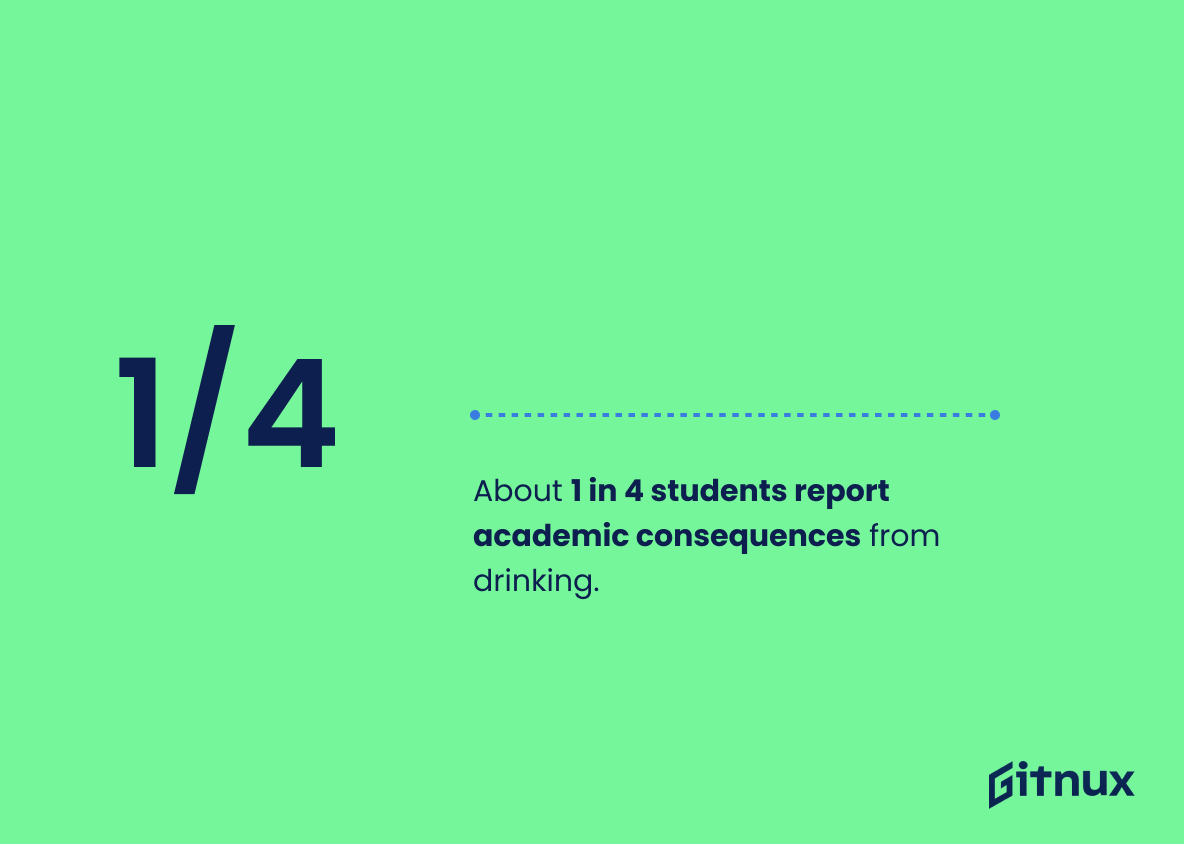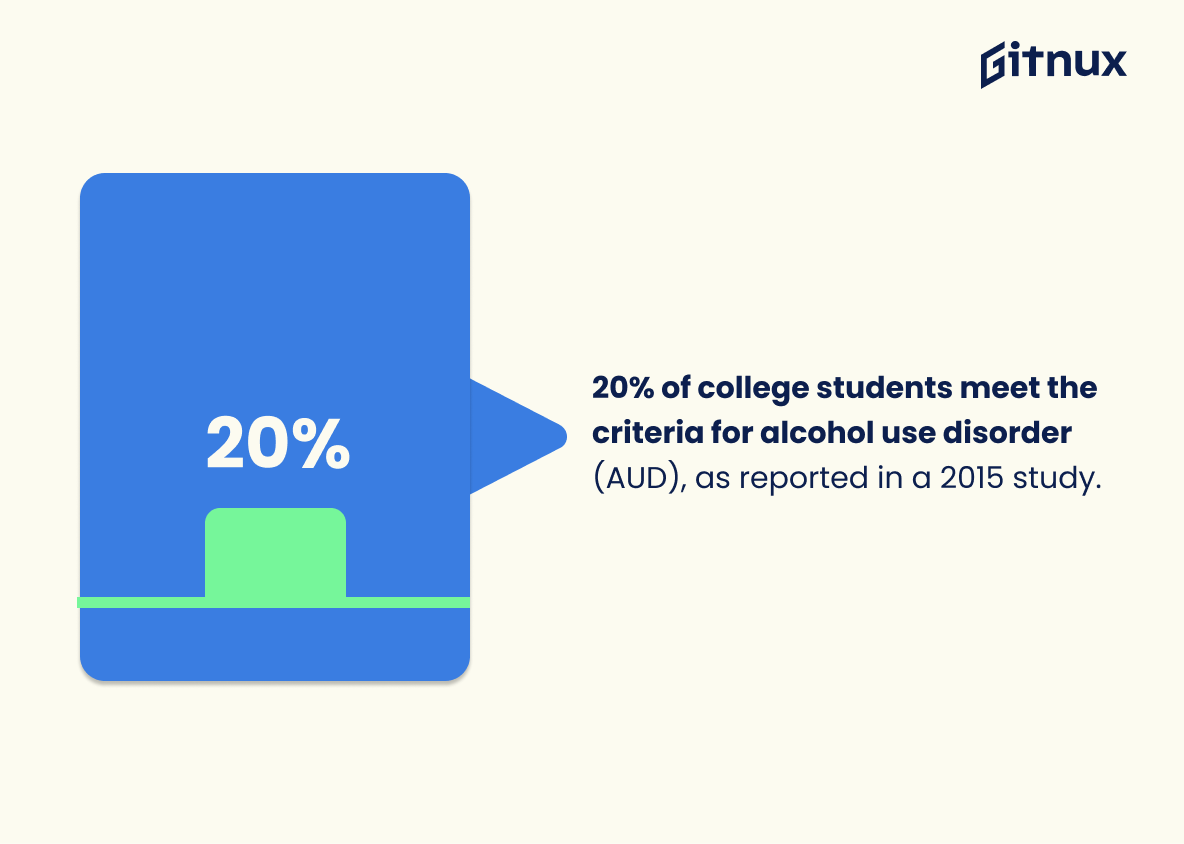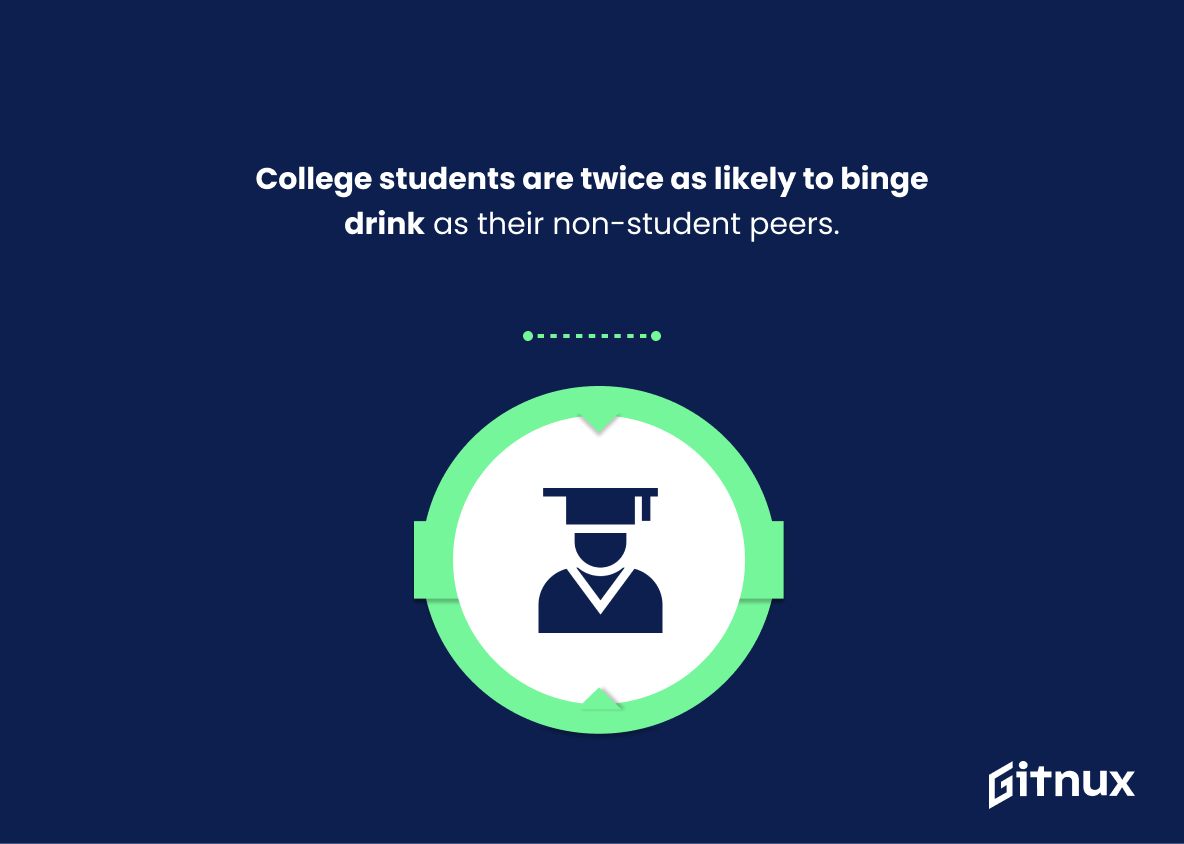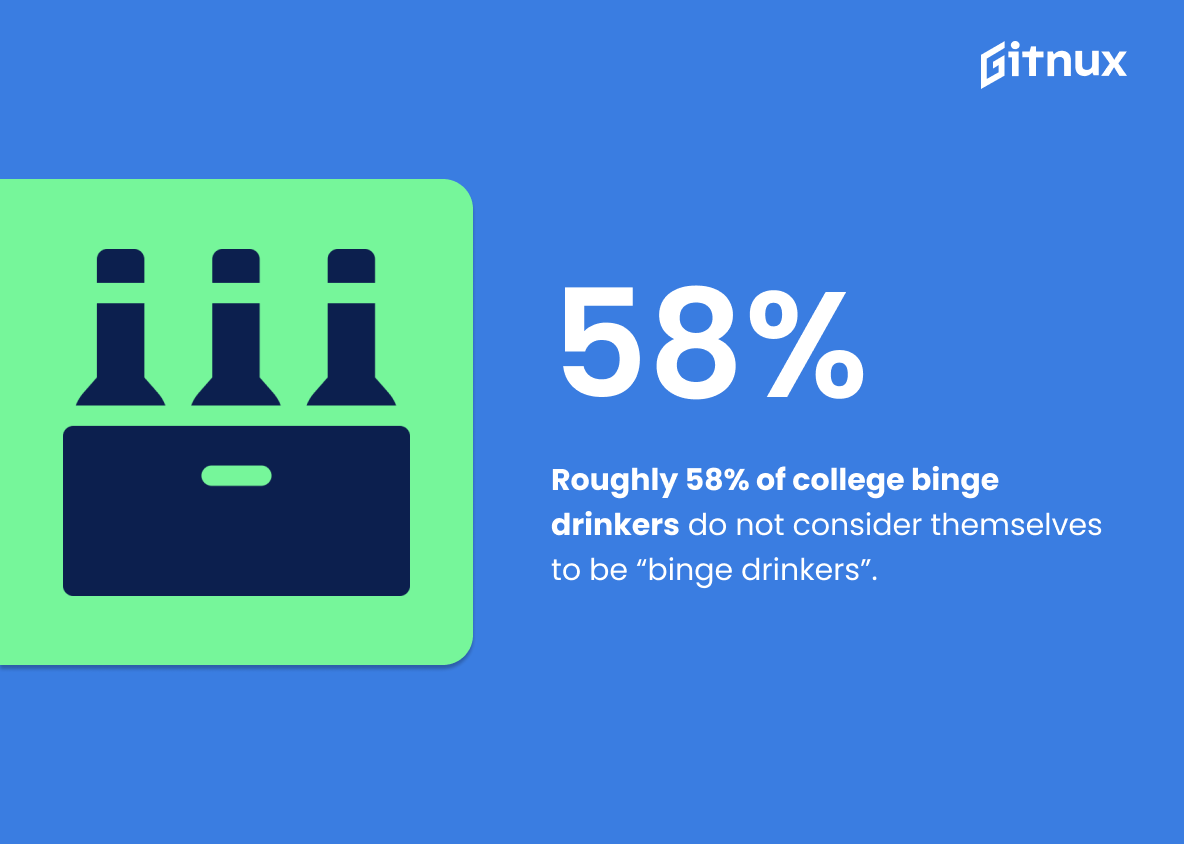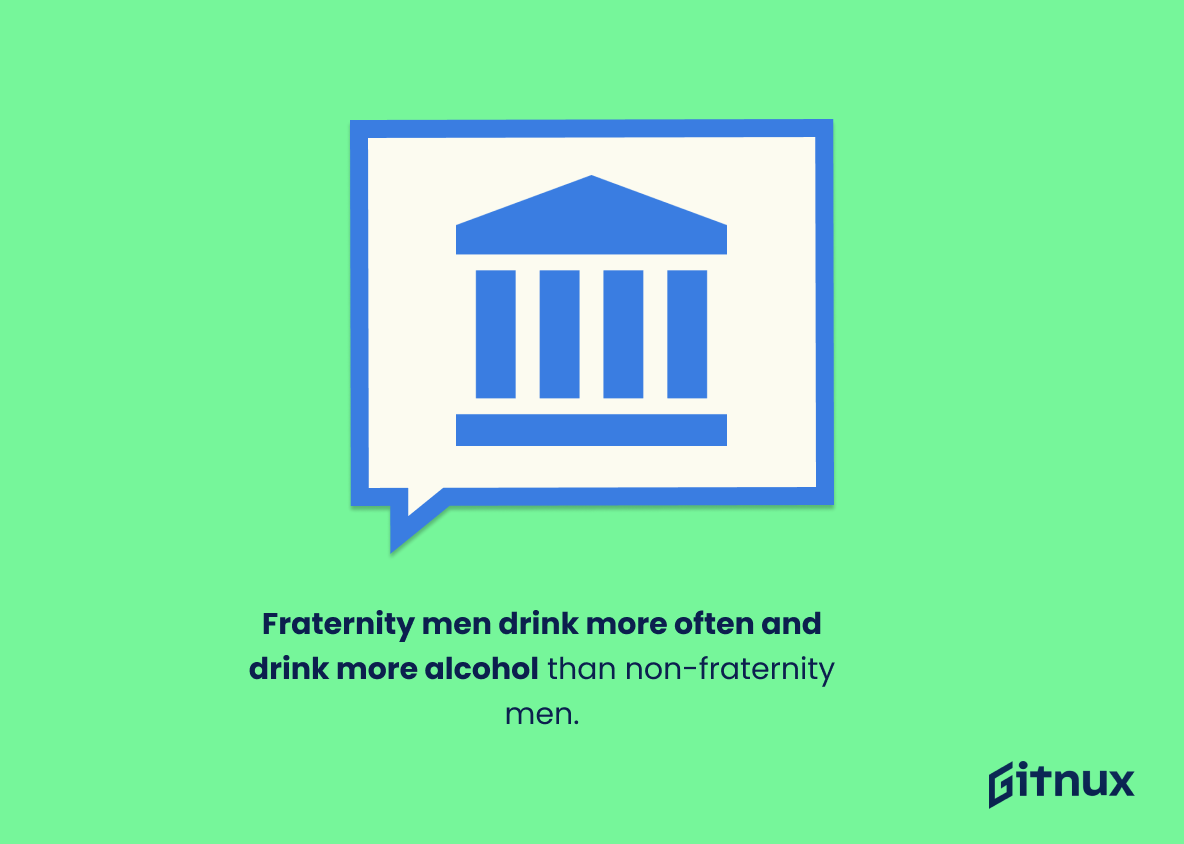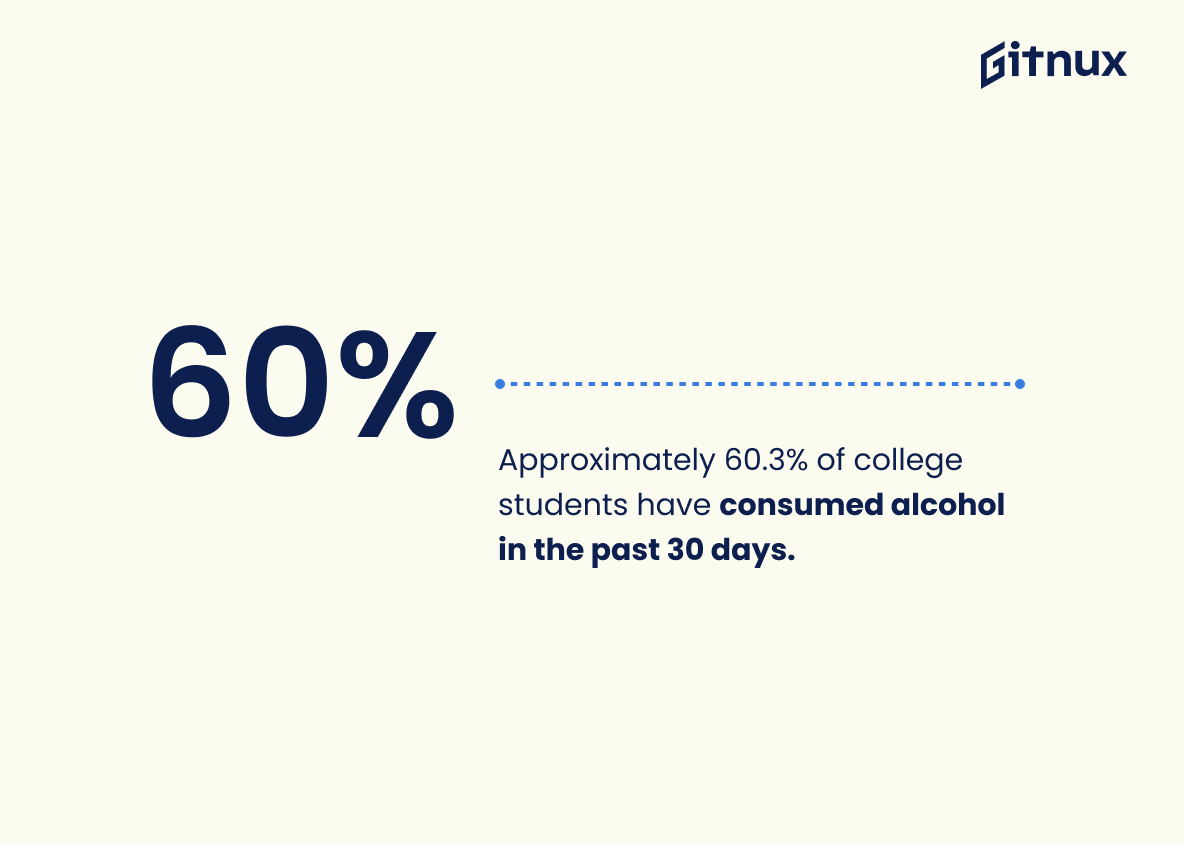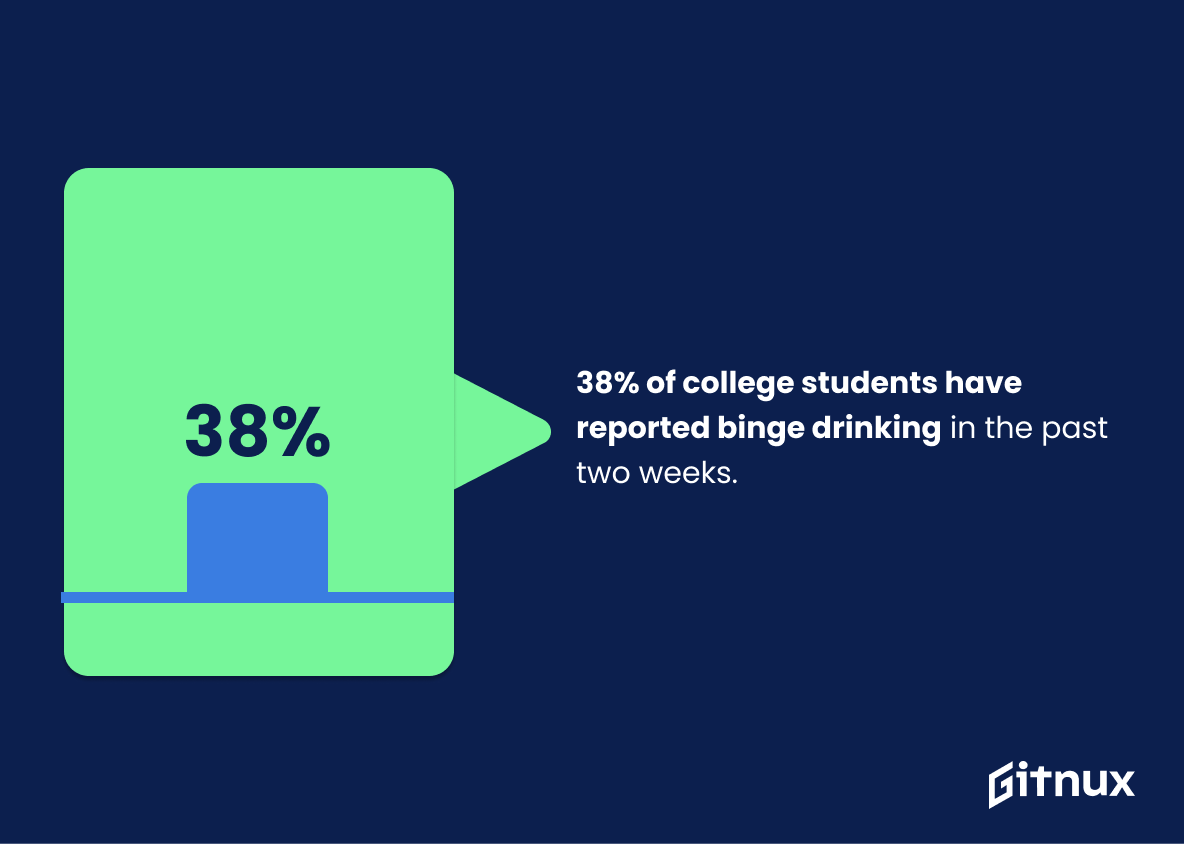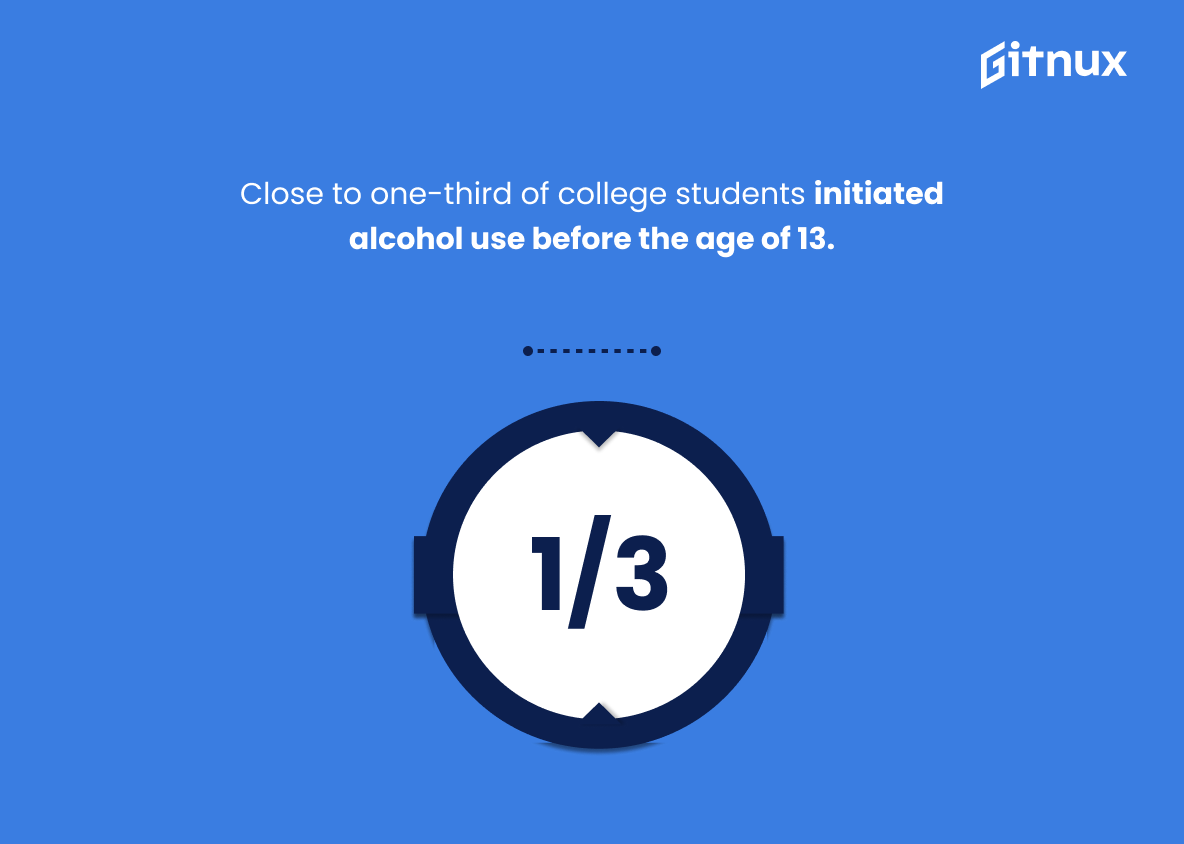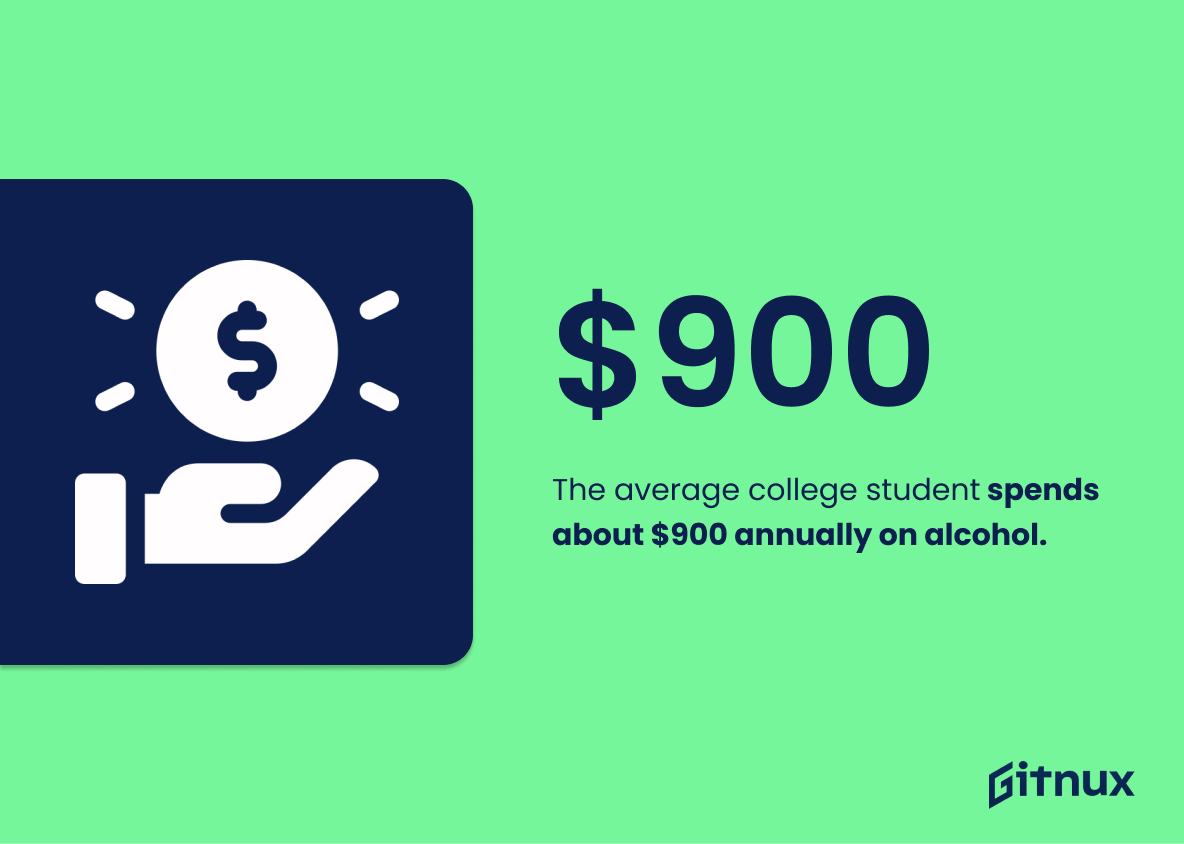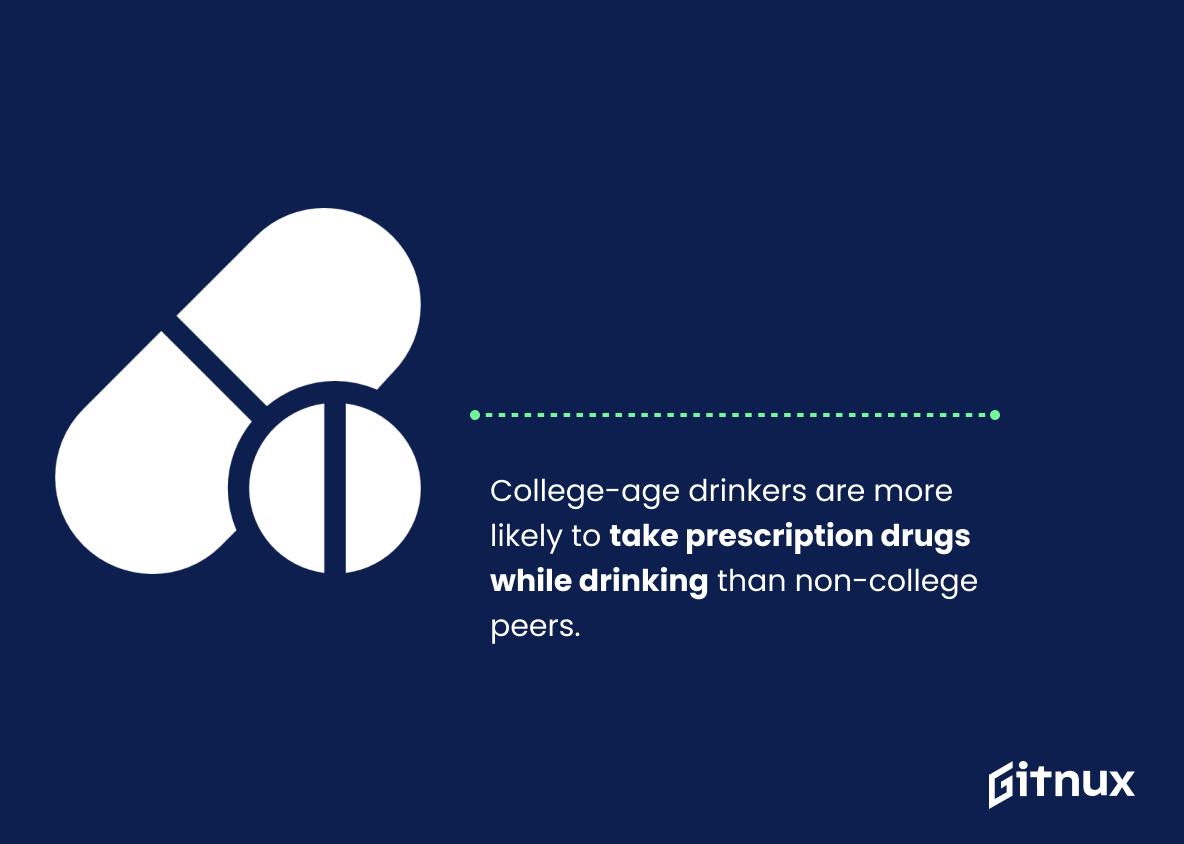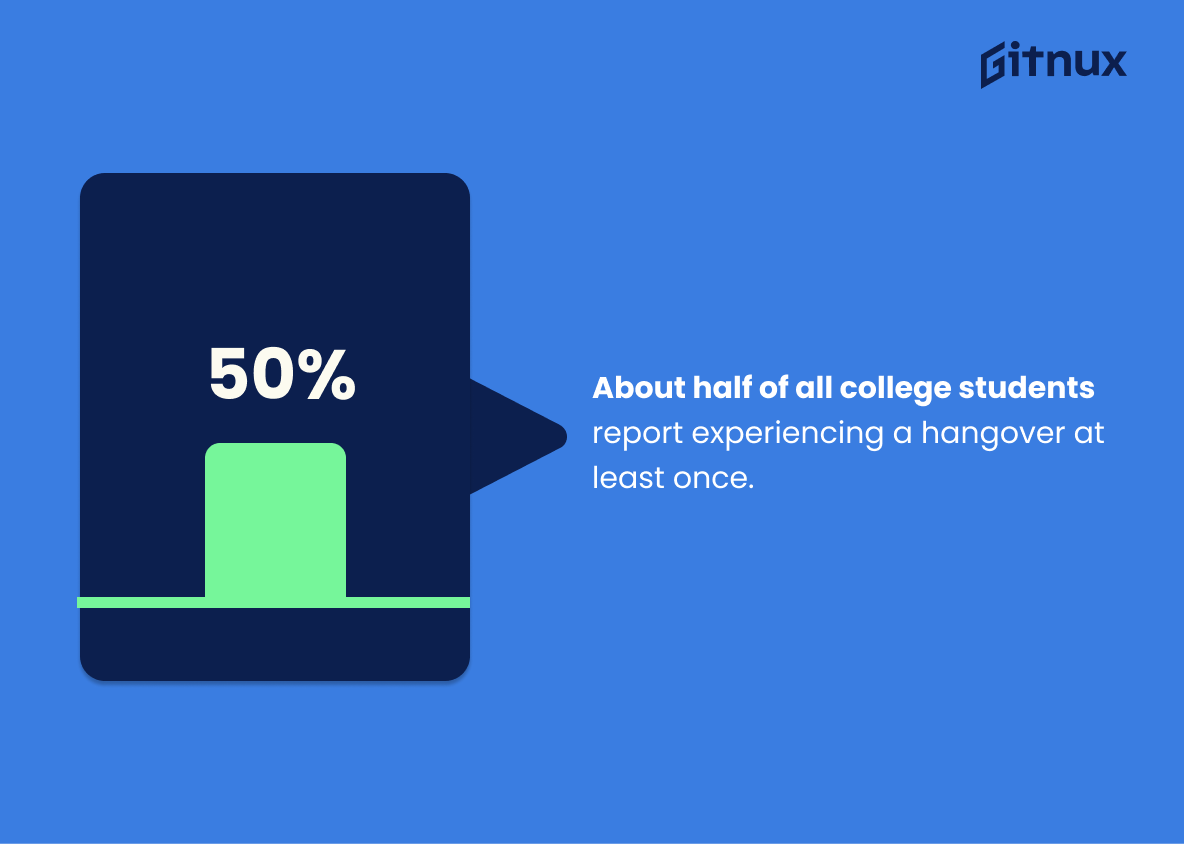College drinking is a serious issue that affects many college students across the United States. According to recent studies, 54.9% of full-time college students aged 18-22 drank alcohol in the past month and around 4 out of 5 college students drink alcohol overall. Unfortunately, this can lead to dangerous consequences such as 1,825 deaths from alcohol-related injuries among 18-24 year olds each year and 696,000 physical assaults by another student who had been drinking annually.
In addition to these alarming statistics on violence related to excessive consumption of alcohol amongst young adults attending university or colleges in America there are also academic repercussions for those who partake in binge drinking with one quarter reporting missing classes due to their intoxication levels or receiving lower grades overall because they have fallen behind academically due to their overindulgence with alcoholic beverages. Furthermore 20% meet criteria for an Alcohol Use Disorder (AUD) which has further implications both physically and mentally if left untreated leading them down a path towards addiction problems later on life should it not be addressed at an early stage when still studying at higher education institutions within the US borders .
It appears that men involved in fraternities are more likely than non fraternity members when it comes consuming large amounts of liquor while 58 percent do not consider themselves ‘binge drinkers’ according SAMHSA research findings whilst MTF survey results suggest 60 point 3 percent consumed some form alcoholic beverage during last 30 days prior taking part study , 38 % reported having done so excessively i e five drinks row two weeks before being questioned about habits . On average American undergraduates spend 900 dollars per annum buying booze plus depressed individuals tend consume greater quantities suffer negative outcomes associated heavy use depressants whereas athletes appear twice as likely indulge compared peers outside sporting circles . Finally 11 % admitted driving under influence drugs after imbibing too much meanwhile 62 point 5 19 22 age group said same thing 34 six binged previous thirty day period end 2019 respectively .
College Drinking Statistics Overview
Approximately 1,825 college students aged 18-24 die from alcohol-related injuries, according to a 2018 study.
This statistic is a stark reminder of the dangers of excessive drinking among college students. It highlights the need for greater awareness and education about the risks of alcohol consumption, as well as the importance of responsible drinking habits. It also serves as a reminder that alcohol-related injuries can have serious and even fatal consequences.
In 2018, around 696,000 students aged 18-24 were physically assaulted by another student who had been drinking.
This statistic is a stark reminder of the dangers of college drinking. It highlights the fact that alcohol consumption can lead to physical violence, and that college students are particularly vulnerable to this type of attack. It is a sobering reminder that college drinking can have serious consequences, and that it should be taken seriously.
About 1 in 4 students report academic consequences from drinking, including missing class, falling behind in class, doing poorly on exams or papers, and receiving lower grades overall.
This statistic is a stark reminder of the potential consequences of college drinking. It highlights the fact that excessive drinking can have a significant impact on academic performance, with a quarter of students reporting negative academic outcomes. This serves as a warning to students that drinking can have serious repercussions, and should be taken into account when making decisions about alcohol consumption.
20% of college students meet the criteria for alcohol use disorder (AUD), as reported in a 2015 study.
This statistic is a stark reminder of the prevalence of alcohol use disorder among college students. It highlights the need for increased awareness and education about the risks associated with excessive drinking, as well as the importance of providing resources and support for those struggling with AUD.
College students are twice as likely to binge drink as their non-student peers, according to the Substance Abuse and Mental Health Services Administration (SAMHSA).
This statistic is a stark reminder of the prevalence of binge drinking among college students. It highlights the need for greater awareness and education about the dangers of excessive alcohol consumption, as well as the need for more effective prevention and intervention strategies to reduce the risks associated with college drinking.
Roughly 58% of college binge drinkers do not consider themselves to be “binge drinkers,” according to a study published in the Journal of American College Health.
This statistic is a stark reminder of the disconnect between how college students perceive their drinking habits and the reality of their behavior. It highlights the need for greater education and awareness about the dangers of binge drinking, as well as the importance of honest self-reflection when it comes to alcohol consumption.
College men involved in fraternities are more likely to consume alcohol and report heavier alcohol use than their non-fraternity peers, as stated in a report from the National Institute on Alcohol Abuse and Alcoholism.
This statistic is a stark reminder of the dangers of college drinking culture, particularly among fraternity members. It highlights the need for greater awareness and prevention of alcohol abuse among college students, as well as the need for more effective interventions to reduce the prevalence of heavy drinking among fraternity members. The findings of the National Institute on Alcohol Abuse and Alcoholism report underscore the importance of understanding the risks associated with college drinking and taking steps to reduce them.
Approximately 60.3% of college students have consumed alcohol in the past 30 days, as reported by the Monitoring the Future survey.
This statistic is a telling indication of the prevalence of alcohol consumption among college students. It highlights the fact that a majority of college students are engaging in drinking, which can have serious implications for their health and safety. This statistic is an important reminder of the need for college administrators and health professionals to be aware of the risks associated with college drinking and to take steps to reduce the prevalence of alcohol consumption among college students.
38% of college students have reported binge drinking (consuming 5 or more drinks in a row) in the past two weeks, according to the Monitoring the Future survey.
This statistic is a stark reminder of the prevalence of binge drinking among college students. It highlights the need for greater awareness and education about the dangers of excessive alcohol consumption. The Monitoring the Future survey provides a valuable insight into the drinking habits of college students, and this statistic serves as a call to action for universities and other organizations to take steps to reduce the risks associated with binge drinking.
Close to one-third of college students initiated alcohol use before the age of 13, as found in a study published in the Journal of Adolescent Health.
This statistic is a stark reminder of the prevalence of underage drinking among college students. It highlights the need for greater awareness and education about the dangers of alcohol consumption at a young age, as well as the importance of providing resources and support to those who may be struggling with alcohol abuse.
The average college student spends about $900 annually on alcohol, as estimated by a study in the Journal of Alcohol and Drug Education.
This statistic is a stark reminder of the prevalence of alcohol consumption among college students. It highlights the need for greater awareness and education about the potential risks associated with excessive drinking. It also serves as a call to action for universities to take a more proactive approach to addressing the issue of college drinking.
Depressed college students are more likely to drink in greater quantities and experience negative drinking consequences, a study from the Journal of Affective Disorders reports.
This statistic is a powerful reminder of the potential consequences of college drinking. It highlights the fact that college students who are struggling with depression may be more likely to engage in excessive drinking, which can lead to a range of negative outcomes. This information is important for college students, parents, and administrators to be aware of, as it can help inform strategies for reducing the risks associated with college drinking.
College-age drinkers are more likely to take prescription drugs while drinking than non-college peers, as reported in a study in the Addictive Behaviors journal.
This statistic is a stark reminder of the potential dangers of college drinking. It highlights the fact that college-age drinkers are more likely to mix prescription drugs with alcohol, which can lead to serious health risks. This is an important issue to consider when discussing college drinking statistics, as it emphasizes the need for education and prevention efforts to ensure that college students are aware of the risks associated with this behavior.
About half of all college students report experiencing a hangover at least once, according to research in the Journal of Alcohol and Drug Education.
This statistic is a stark reminder of the prevalence of drinking among college students. It highlights the need for greater awareness and education about the risks associated with alcohol consumption, particularly among young adults. It also serves as a call to action for college administrators and faculty to take steps to reduce the amount of drinking on campus and to provide resources to help students make informed decisions about their drinking habits.
College athletes are more likely to consume alcohol than their peers, with about half admitting to binge drinking, as documented in a study published in the Journal of Applied Sport Psychology.
This statistic is a stark reminder of the prevalence of alcohol consumption among college athletes, and highlights the need for greater awareness and education on the risks associated with binge drinking. It is a sobering reminder that college athletes are not immune to the dangers of alcohol abuse, and that more needs to be done to ensure that they are making informed decisions about their drinking habits.
In 2019, 62.5% of college students aged 19-22 reported consuming alcohol in the 30 days prior to the survey, and 34.6% of those students reported binge-drinking.
This statistic is a stark reminder of the prevalence of alcohol consumption among college students aged 19-22. It highlights the fact that a majority of college students are engaging in drinking, and a significant portion of those students are engaging in binge-drinking. This is an alarming statistic that should be taken seriously, as it can lead to serious health and safety risks.
Conclusion
The statistics presented in this blog post demonstrate that college drinking is a widespread issue. Over half of full-time college students aged 18-22 reported consuming alcohol in the past month, and around 4 out of 5 college students drink alcohol overall. Additionally, 1 in 4 students report academic consequences from drinking, such as missing class or receiving lower grades overall. Furthermore, 20% of college students meet the criteria for Alcohol Use Disorder (AUD), and 58% do not consider themselves to be “binge drinkers” despite engaging in binge drinking behaviors. College men involved with fraternities are more likely to consume alcohol than their non-fraternity peers; 62.5% reported consuming alcohol within 30 days prior to a survey taken in 2019; 34.6% admitted to binge drinking during that same time period; 11% have driven under the influence while intoxicated; 38%, on average spend $900 annually on alcoholic beverages; 60%, initiated use before age 13 and nearly half experience hangovers at least once due to excessive consumption of alcoholic beverages . These findings suggest that there is an urgent need for increased awareness about responsible consumption among young adults attending colleges across America today
References
0. – https://www.pubmed.ncbi.nlm.nih.gov
1. – https://www.tandfonline.com
2. – https://www.niaaa.nih.gov
3. – https://www.collegedrinkingprevention.gov
4. – https://www.pubs.niaaa.nih.gov
5. – https://www.samhsa.gov
6. – https://www.monitoringthefuture.org
7. – https://www.semanticscholar.org
8. – https://www.eric.ed.gov
9. – https://www.responsibility.org
10. – https://www.jahonline.org
11. – https://www.ncbi.nlm.nih.gov
